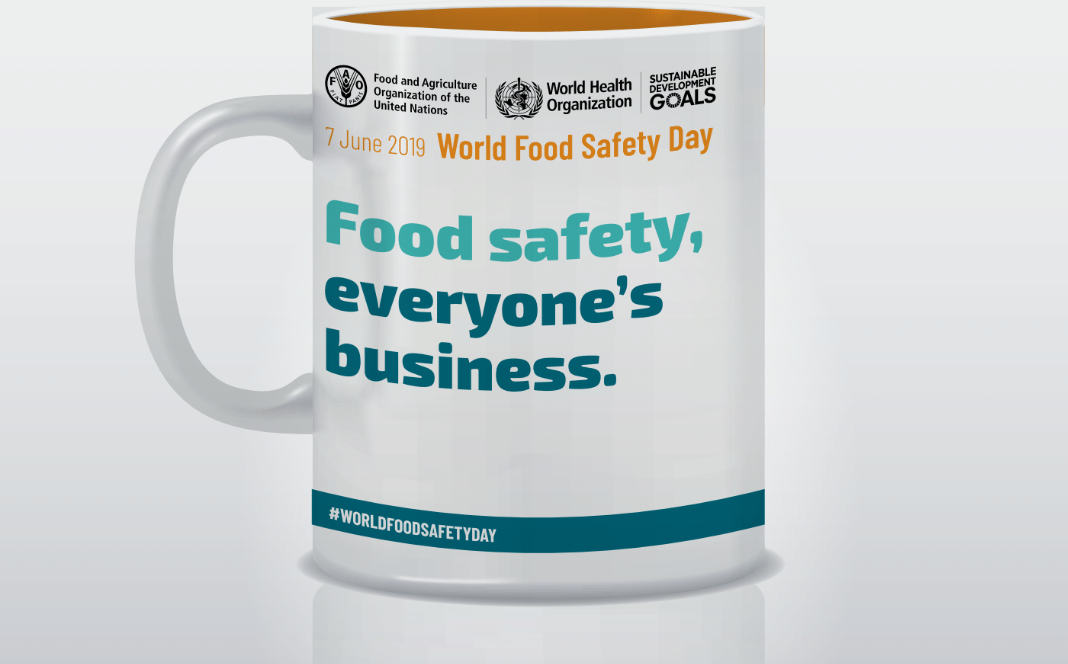Every minute 44 people fall sick from eating contaminated food, according to the World Health Organization.
More than 23 million become ill and an estimated 4,700 die per year, according to data for the WHO’s European Region in a report based on 2010 figures and presented ahead of the first World Food Safety Day June 7. The World Health Organization (WHO) and the Food and Agriculture Organization of the United Nations (FAO) are sponsoring World Food Safety Day and intend to make it an annual event.
Officials from the European Region warned figures represent only the “tip of the iceberg” and the true number of cases is unknown. The WHO European region is wider than the European Union and includes 53 member states such as Kazakhstan and Uzbekistan.
Globally, it is estimated that more than 600 million, or almost one in 10 people, fell ill after consuming contaminated food in 2010. Of these, 420,000 died, including 125,000 children younger than 5 years old.
Making people think
Dina Pfeifer, acting food safety technical officer at WHO/Europe, said World Food Safety Day is important to appreciate efforts to keep food safe.
“The bottom line from the point of view of industry, consumers and governments is they take safe food for granted. Systems become complex to respond to the current situation. We need trust, funds and resources in these systems and national and global coordination. World Food Safety Day brings to the consciousness that there are people who take care to ensure the food on our plate is safe. It is a shared responsibility and we must contribute to it,” she told Food Safety News.
“For those with chronic underlying conditions and vulnerable children, the immuno-deficient population with HIV or aids or those having chemotherapy for cancer, what is a small bout of diarrhea for healthy people can be life-threatening for them.”
 The WHO is secretariat of Codex Alimentarius with FAO and is responsible for providing risk assessments in areas like food additives and other health impacts.
The WHO is secretariat of Codex Alimentarius with FAO and is responsible for providing risk assessments in areas like food additives and other health impacts.
“WHO/Europe supports countries to strengthen public health systems. We can’t do everything so the focus is in low and middle income countries on cross sectorial work and where the government system changes in countries, bringing the agriculture, health and environment ministers together to work on these issues,” said Pfeifer.
Pfeifer said food standards are important to ensure countries are on the same page and implementing actions with the same methods.
“You can have the whole world on your plate, the salt is from one country, the vegetables have three different sources and produce from 10 or 20 countries. This makes investigation and traceability when there is a problem very complicated,” she said.
“Whole genome sequencing is a wonderful tool and it is difficult to confirm one source without it. But it does not replace regular surveillance to know what to test and sample. WGS cost is getting lower and countries can start to afford it. It contributes to safer food but is not the one and only method.”
Dr. Zsuzsanna Jakab, WHO Regional Director for Europe, said a simple meal can contain ingredients from multiple continents and safety depends on international collaboration.
“Every country around the world, from small to big, from rich to poor, has suffered from foodborne illnesses, and Europe is no exception. The scale of the challenge posed by foodborne disease is striking, indicating the importance of preventing and mitigating risks to food safety.
“World Food Safety Day is an unprecedented opportunity to call on governments to strengthen the systems that guarantee safe food, across sectors and across Europe and the world.”
Norovirus most frequent foodborne illness
Unsafe food can lead to lasting or severe illness, hospitalization and death. The overall burden of foodborne disease in Europe is estimated to be more than 400,000 disability-adjusted life-years (DALYs), meaning years in which a person’s life is affected by a disease.
The most frequent causes of foodborne illness are diarrheal disease agents such as norovirus with an estimated 15 million cases, followed by Campylobacter spp., which is responsible for almost 5 million infections, according to estimates.
Non-typhoidal Salmonella spp. causes the most deaths followed by Campylobacter spp., norovirus, Listeria monocytogenes and Echinococcus multilocularis. Overall in the region, diarrheal diseases are responsible for 94 percent of foodborne illnesses, 63 percent of related deaths and 57 percent of the disease burden.
The parasitic disease toxoplasmosis, which can cause severe damage to unborn children and immune-deficient patients, is the third highest burden of foodborne disease.
Dr. Tedros Adhanom Ghebreyesus, WHO Director-General, said the 420,000 deaths annually are entirely preventable.
“World Food Safety Day is a unique opportunity to raise awareness about the dangers of unsafe food with governments, producers, handlers and consumers. From farm to plate, we all have a role to play in making food safe,” he said.
The theme of the day is that food safety is everyone’s business. Unsafe food hinders development in many low- and middle-income economies, which lose around $95 billion in productivity associated with illness, disability, and premature death suffered by workers.
“Food is something people don’t think about until it goes wrong, yet unacceptable numbers of people are being subjected to the misery of foodborne illness, sometimes with serious consequences – especially for the very young and very old. From handwashing, cooking and storing food properly, to surveillance and international regulation – every piece of the food safety puzzle affects lives, economies and whole communities,” said Dr. Dorit Nitzan, acting Regional Emergency Director at WHO/Europe.
(To sign up for a free subscription to Food Safety News, click here.)

